Back to Blog Home
How to find SEO clients in 2025 (8 powerful strategies)

Over the past couple of years, I’ve been fortunate to work with some amazing companies and help them with their SEO (search engine optimization). And today, I want to pay it forward and show you how to get SEO clients so you can build a fruitful freelancing or agency business.
I’ll show you what types of businesses SEO works best for and go over eight different strategies you can use to get more SEO clients. And no, they aren’t generic tactics.
They’re strategies I’ve personally used to build my own SEO and content marketing agency — everything from inbound marketing tactics to super personalized cold outreach (done right). Alright, I don’t want to ramble on for too long so let’s just get straight into it.
Who are the ideal customers for SEO?
Before you start hunting down clients, it’s important to know which businesses actually benefit from SEO services. Not all companies are equal when it comes to SEO needs and potential impact.
For example, local SEO tactics for a law firm are very different from organic strategies for a B2B SaaS company. Knowing what type of niche you want to sell your services in will allow you to create a better pitch when we get into the eight strategies later in this article.
Here are the types of businesses that benefit the most from SEO services:
- Ecommerce websites: Many online stores depend heavily on product visibility in search engines to drive organic traffic and sales. Ecommerce sites need keyword optimization to rank for both informational and transactional terms across categories. Structured data, voice search compatibility, landing page speed/UX, and backlinks can also be critical.
- Local service providers: For local small businesses like dentists, contractors, accountants, lawyers, and gyms, local SEO is vital to being discovered by nearby customers. Optimizing Google My Business listings, citations/NAP consistency, reviews, and on-page elements (e.g. city + service for keyphrases) is key.
- Publishers & bloggers: Building organic visibility is essential for publishers to maximize article readership and social referral traffic. Expanding keyword reach and strategically promoting the best-performing pieces through backlinks takes expertise.
- B2B companies: Lead generation is critical for SaaS companies. Creating a content and keyword strategy, writing SEO-optimized content, and effective link building helps companies rank higher in SERPs for commercial intents like “best [x] software”.
- New businesses: Sites launching new branding products or major redesigns require initial SEO best practices for everything from site architecture to metadata. Early optimization prevents issues and builds a solid foundation to scale.
While many businesses can benefit from SEO to some degree, these types of businesses often depend the most on search visibility for sustaining organic growth. By showcasing the ROI you can provide, through proven strategies we are about to get into, you’ll be signing your first client in no time.
Alright, let’s get started!
8 clever ways to get SEO clients in 2025
Here are eight clever strategies you can use to get SEO clients:
- Send a cold email (the right way)
- Write a free article (and rank it)
- Improve rankings of an existing article
- Create a content marketing plan
- Create your own website (and rank it)
- Partner with web development agencies
- Partner with venture capital firms
- Use a niche marketplace site
Okay, let’s go through each SEO strategy.
1. Send a cold email (the right way)

Cold email outreach is one of the most effective methods for getting a business owner's attention to sell your SEO services. It’s what I’ve used to sign some of my biggest clients (we’re talking 5-figure-a-month deals).
Done correctly, personalized cold emails can convert better than almost any other approach. However, generic spam emails with no customization won't get you far. Not only will they likely be ignored, but they can even hurt your sender reputation if your emails get marked as spam.
Instead, research target companies thoroughly first. Identify ones where your specific SEO expertise could provide tremendous value based on aspects like their market, competitors, offerings, goals, and more.
Once you create a list of people you want to reach out to, personalize each cold email by referencing specifics about their business model, products, pain points, and opportunities.
For context, when I use this strategy, it takes me about an hour or two just to send one email — which is why my conversion rate on these emails is so high. This is because I stack this strategy with some of the other strategies we’ll go into on this list.
The other reason why I have a lot of success with this strategy is because I go straight to the inbox of either the business owner or the person in charge of marketing.
When reaching out, keep in mind that it’s better to go top down, not bottom up. What I mean is it’s harder for a marketing manager to forward your email to a CMO who will care. But it is easier to send an email to a CMO who then forwards your email to a department head.
Tools like LinkedIn Sales Navigator and Hunter.io can help uncover direct contact info for the appropriate decision-makers. This will help you avoid getting trapped in endless CC email loops by targeting the right person from the start.
The goal of initial cold emails is not to overtly pitch services just yet. Rather, aim to introduce yourself, open a dialogue showcasing helpfulness, and offer something of value (like the other strategies on this list). If these emails provide specific ideas for increasing visibility and converting readers into buyers, you can position yourself as the perfect SEO expert to drive results.
2. Write a free article (and rank it)
This strategy is how I signed my first (real) client for my SEO agency. I say ‘real’ because it was the first client that I signed a big recurring monthly contract with (not just a one-off project).
Let me walk you through exactly what I did step-by-step.
I researched and found a fast-growing SaaS startup that offered customer service solutions for enterprises. After analyzing their site and content, I realized they didn't rank for their core service terms.
So I emailed the CEO directly and offered to write a comprehensive guide targeting a valuable keyword in their niche that they could publish on their site for free.
The CEO was thrilled to get a well-researched and written piece for no cost. And I was happy because it was an opportunity to build my own case studies — I wasn’t even trying to sign them as a client at this point.
After publishing and optimizing the article, it started ranking on the first page for that valuable keyword within a few months. Even better, the article began driving leads and customers for them! The CEO was blown away and reached back out to bring me on retainer to expand their SEO results.
The best part? That first ranked article I used to get my foot in the door played a crucial role by showcasing the immense growth I could drive through proven SEO.
So if you're struggling to land those first few retainers, try this strategy of writing free, value-driving content for potential clients. Let the results speak for themselves!
3. Improve rankings of an existing article
Another effective approach is identifying high-potential evergreen content a business already published that can be further optimized to improve rankings.
Use tools like Ahrefs or Semrush and scan through and analyze older posts on a website that cover valuable keywords and drive decent traffic (but don’t rank on page one of Google).
These are great opportunities for optimization. Reach out and offer to overhaul their content for free by expanding word count, incorporating related questions searchers ask, updating statistics/facts, integrating multimedia for higher time on page, strengthening calls to action, and more.
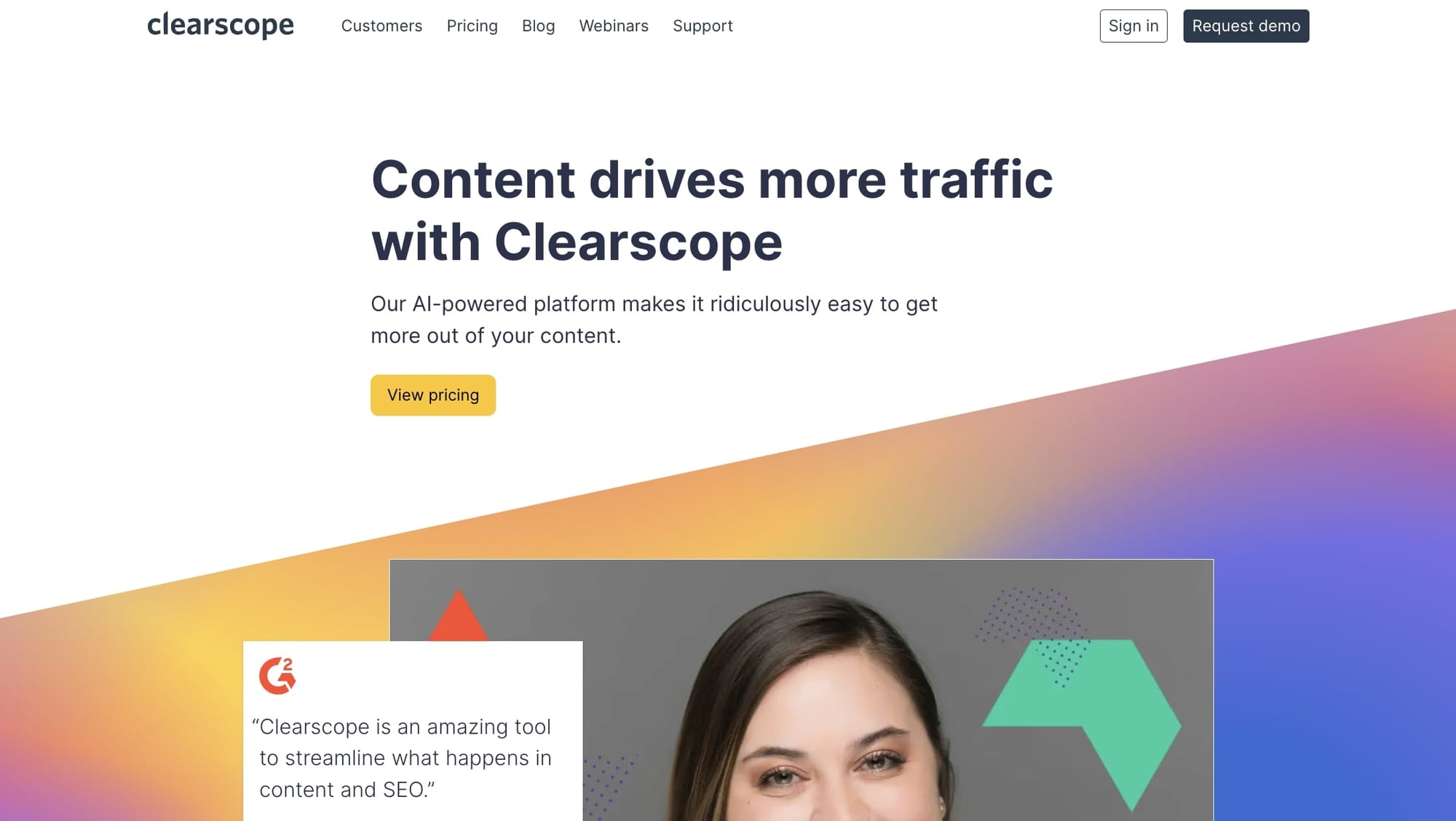
Explain how you would also refresh titles/descriptions for keyword relevancy, update on-page elements like H1/H2s for better indexing potential, and interlink to related materials. You can use a tool like Clearscope or Surfer SEO to do this.
You could also discuss building high-quality backlinks through blogger roundups and resource pages to improve rankings (a more advanced technique). The main goal is to give specific ideas tailored to their piece and vertical that can help multiply its organic visibility and conversion rates.
This strategy can be better at times compared to writing an article from scratch because updating content has a quicker ROI. Instead of it taking months for a brand new article to gain traction in the SERPs, updating content can show results in as little as a few days to a week.
This will showcase immense value to justify signing an ongoing contract.
4. Create a content marketing plan
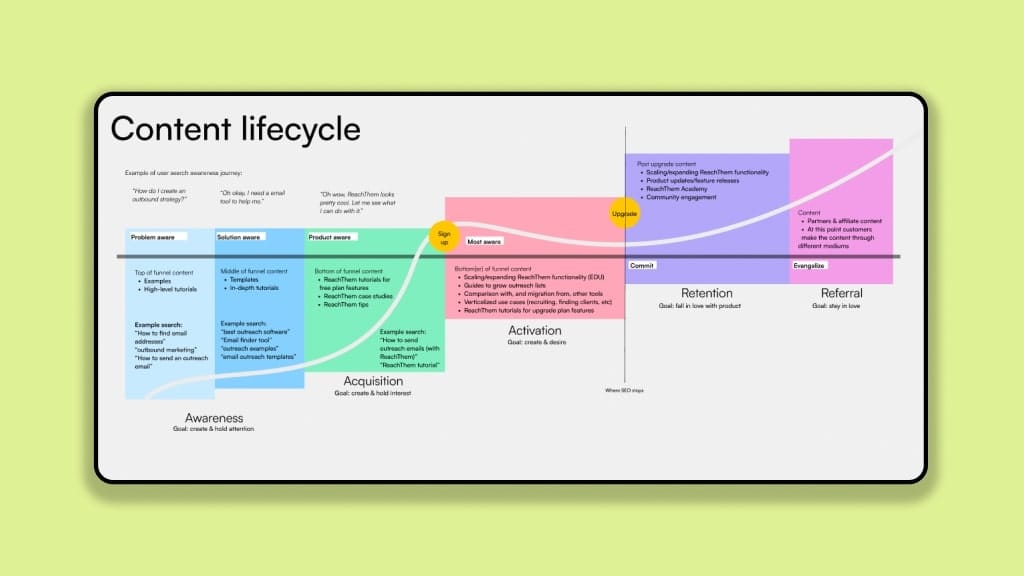
Another great lead generation tactic is developing a documented framework, sample plan, or template around the SEO content creation process to share with prospective clients. If you’re reaching out to SaaS businesses, I wrote a guide on how to do this here.
You first want to identify the most common content needs and goals for your ideal customer. For example, an ecommerce company may want to boost rankings around product terms, improve visibility for category pages, drive traffic to seasonal sales, or promote newly launched items.
Outline an end-to-end content plan that maps to those objectives. Include details like:
- Ideal publishing cadence (e.g. 2X per month)
- Content types and formats (articles, videos, guides)
- Keyword/topic research frameworks
- Optimization best practices
- Promotion through social media, email, and outreach
- Links to your previous successful examples
- Analytics dashboards to showcase performance
Package this nicely as a downloadable template, sample doc, or editable presentation they can reference.
You’ll want to also do a bit of keyword research and give some ideas for content they can create. But, you don’t want to give away too much — just enough so they know what you’re talking about.
Reach out and share a preview of this framework. Explain how following such a strategic process for developing SEO content can impact organic growth. Emphasize that you’ve proven this with clients successfully. You can also end your email with a pitch to hop on a call so you can elaborate more on the strategy.
The prospect can review the doc and plug-in details relevant to their unique business needs. This positions you as an expert. Then, when they’re ready to execute, they’ll remember to reach out to you.
5. Create your own website (and rank it)
One thing I’m always amazed by is that many SEO agencies and freelancers don’t actually have a website that ranks for valuable keywords in their niche.
As an SEO service provider, one of the most powerful portfolio pieces is having an exceptional website for your own business.
Start by creating quality content specifically around your target audience. For example, if you specialize in SaaS SEO, publish comprehensive guides on creating SEO dashboards or optimizing elements like product pages, blog content, category rankings, and more (like what I do!).
Incorporate focused keywords into each piece and extensively optimize all on-page elements including titles, metadata descriptions, ALT tags, headers, media, calls-to-action, technical SEO, and internal linking.
Then, actively build legitimate high-authority backlinks through guest posting on industry websites (see strategy two on this list), interviews on relevant podcasts, contributing to niche roundups and lists, and earning local features.
In just a few months time, you can easily rank multiple owned articles on the first page of Google results for valuable SEO terms in your space.
When potential SEO clients search for related topics and discover your well-optimized content ranking above competitors, it powerfully showcases your capabilities. They can explore pages to see SEO best practices in action to consider bringing you on board.
This strategy builds your brand and enormous credibility. It shows you walk the walk when it comes to executing what you pitch to others.
This is why I’m not a fan of quick and easy tactics to get new SEO clients. I’m all about building a long-term, successful business that you can build a career off of. Most of the strategies I have on this list can take months, if not a couple of years, to build a real SEO business. But, they are so worth it and will put you in the top 1% of SEO service providers.
6. Partner with web development agencies
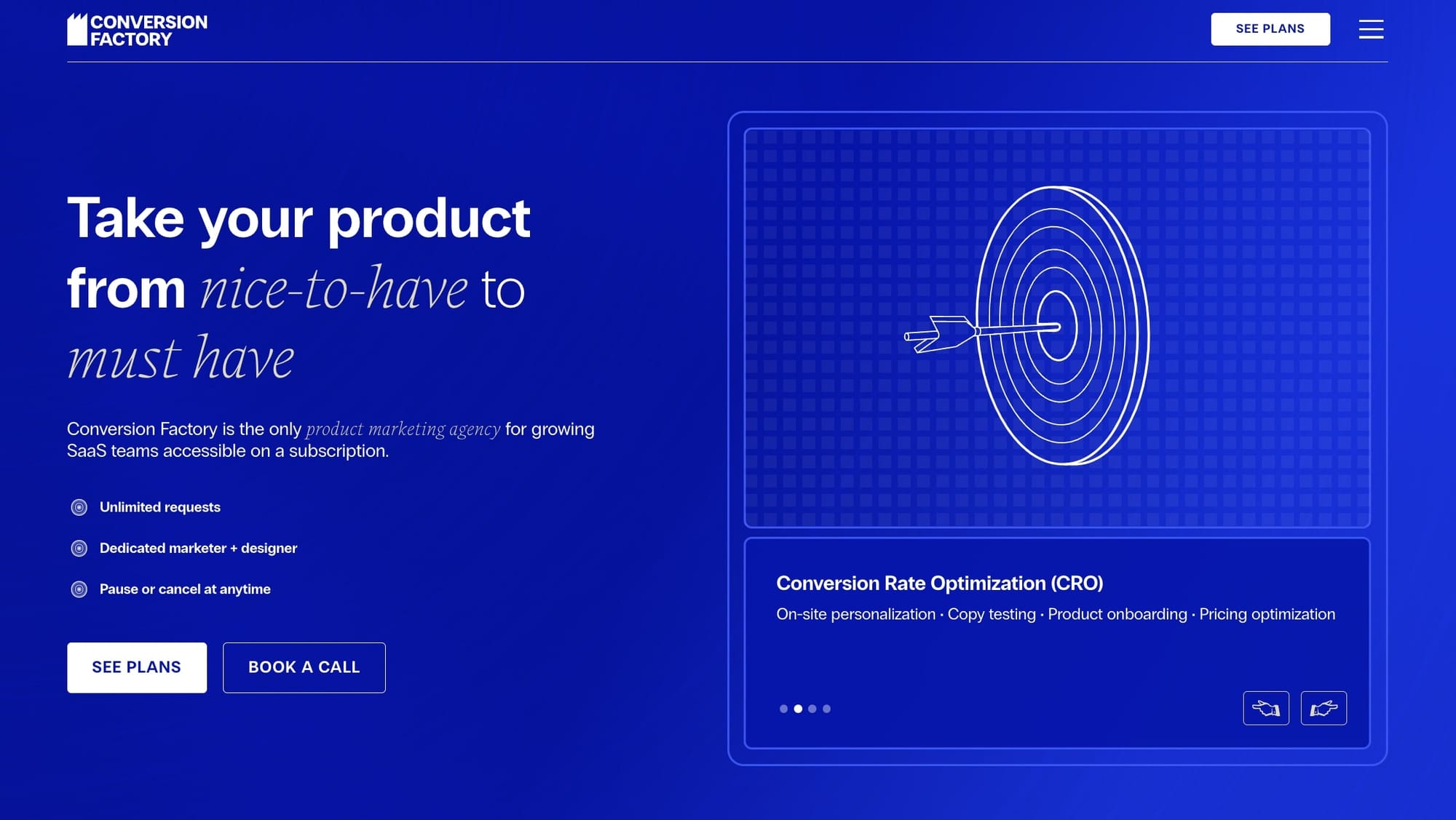
As you scale your agency, manufacturing word-of-mouth referrals is crucial for sustainable growth. One of the most effective ways is establishing strategic partnerships with complementary service providers.
For example, teaming up with web design/development firms can create a turnkey solution for clients needing new sites and organic visibility. Through revenue share agreements, you can easily exchange referrals and SEO leads.
To do this right, you want to start by identifying reputable agencies that serve the same types of clients you want to target. Similar to strategy one on this list, you can use tools like LinkedIn Sales Navigator to connect with agency owners directly through personalized emails and messages.
Introduce yourself as an SEO expert in the same niche and how you’re passionate about helping web development agencies create an extra revenue stream through comprehensive SEO services. Emphasize how you take a collaborative, customer-first approach focused on collective value.
Offer to provide free SEO audits for some of their latest builds to showcase optimization opportunities in actionable detail. Provide additional helpful resources around boosting organic presence as you build rapport and credibility.
Over time explore formalizing a partnership where you can co-pitch bundled solutions for new customers involving site launches paired with intensive SEO engagements. This provides immense value rapidly.
I’ve even seen other SEO agencies use this strategy. For example, an agency that specializes in off-page backlink building partners with an agency that specializes in content creation.
Jointly promoting one another to current client bases expands collective reach as well, creating a win-win-win opportunity for everyone involved — a web agency, your SEO agency, and a business in need of both.
7. Partner with venture capital firms
Another referral source are venture capital and private equity firms invested in companies in your niche. VCs have a vested interest in accelerating growth and gains for their portfolio companies.
Research firms backing startups or scaleups in your specialty areas like ecommerce, SaaS, or local services. Email partners and principals offering your SEO services to amplify visibility and success for their existing portfolio.
Explain how dominating organic search can support rapid customer acquisition, lower cost per lead, inform R&D efforts, and enrich data for future funding rounds.
Appeal to the VC’s core business needs by showcasing how your offerings strategically align. Bonus points if you’ve already helped one of their portfolio company. And as portfolio companies thrive thanks to your efforts, VCs will connect you with additional businesses needing your services.
This strategy is how some of the biggest SEO agencies continue to bring in more clients than they can even handle.
8. Use a niche marketplace site
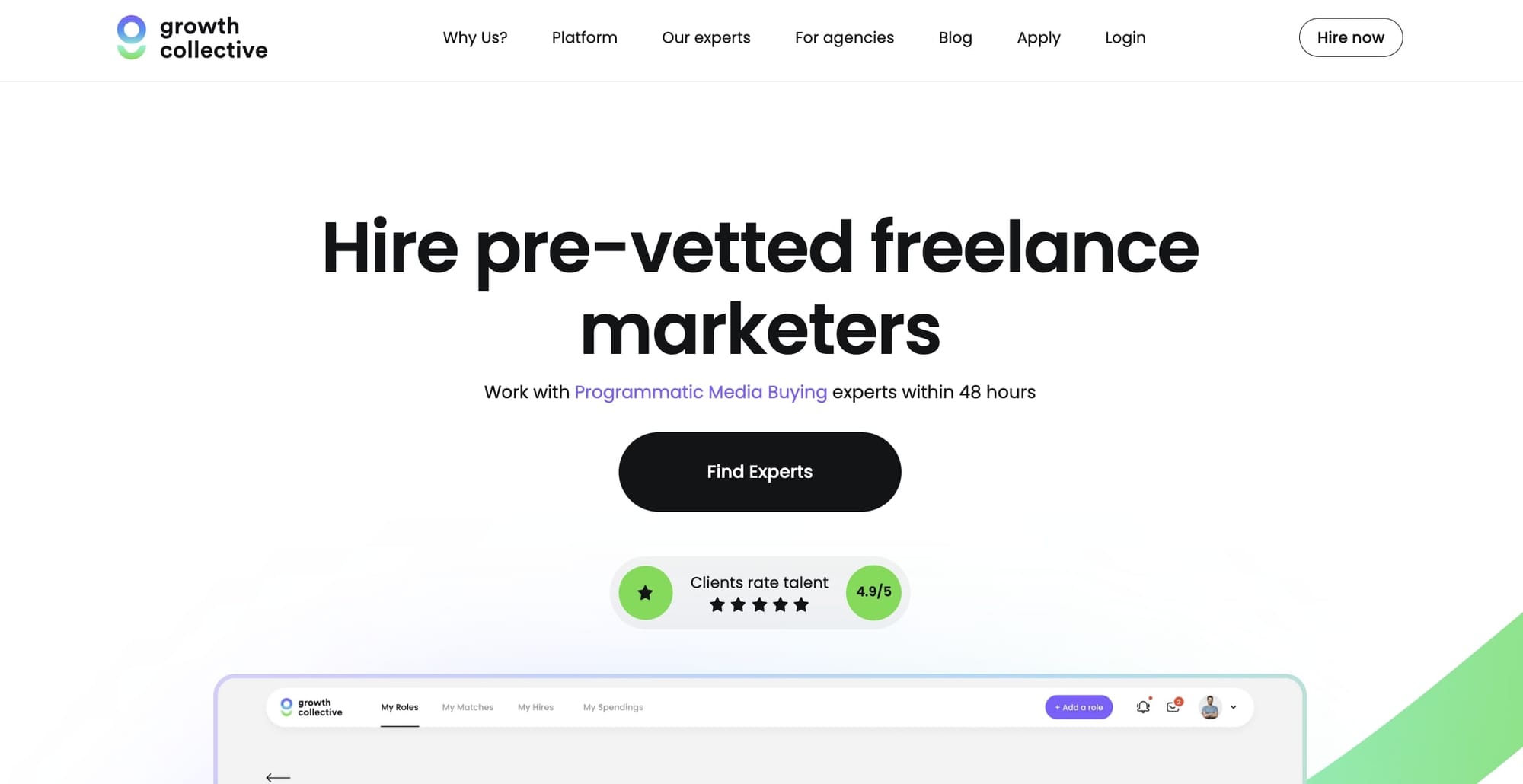
Another client acquisition approach is joining specialized freelance marketplaces for marketing experts. General platforms like Upwork and Fiverr can work, but niche sites tailored to SEO bring better results.
Great options include:
- MarketerHire: Features pre-vetted marketing freelancers and agencies so companies can hire them.
- Growth Collective: Curated community connecting marketing freelancers with scaling startups and funded companies.
- Passionfruit: A marketplace for freelance marketers looking for new gigs, and companies looking to hire them.
- Best Writing: While mainly content-focused, has a strong subset of SEO writers and consultants available for hire.
Marketplaces are a great way to get your foot in the door. They’re also great if you don’t want to go through some of the more time-consuming marketing strategies on this list. However, I’ve personally found that the easier it is to attract clients, the more low-quality clients you’ll attract.
I list this strategy last because these platforms haven't been the best lead source in my personal experience. But many SEO freelancing friends swear by them for steady client flow, so it’s still worth considering.
And that’s it! Hopefully, you now have a few ideas for how to get SEO clients for your business!
Grow your SEO business with Copilot
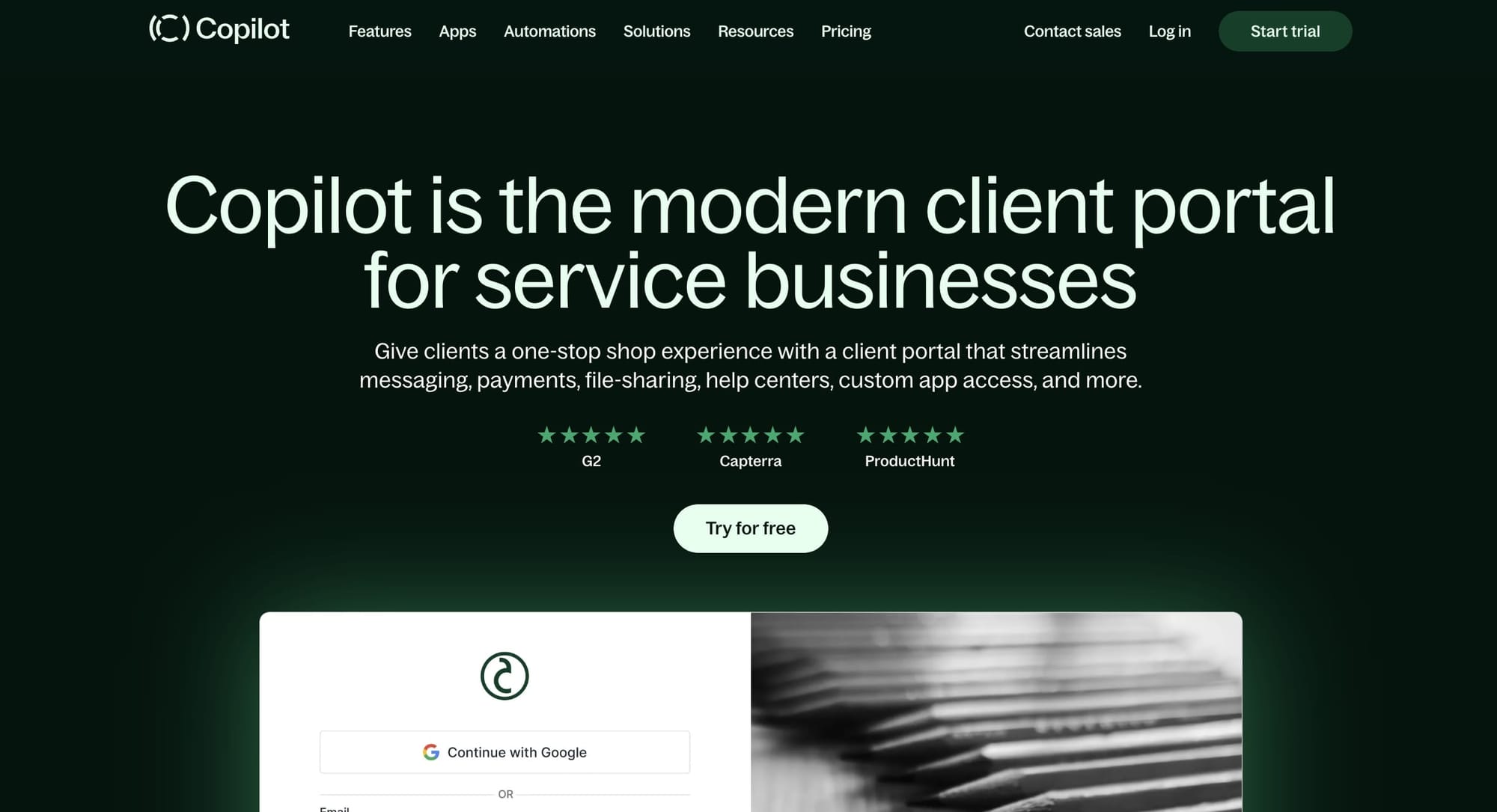
Once I started to scale my SEO business, I realized that the client experience is probably the most important aspect of a service business.
Yes, results matter and it’s important to help your clients drive incredible results. But, how your client perceives you and how you organize your workflows are just as important.
One thing I noticed many successful marketing agencies do is offer their clients white-label client portals. This way, clients can log into their own dashboard and view everything from messages, contracts, invoices, project timelines, reporting, and much more.
At the time, my agency website was (and still is) built on Webflow. And I tried to look for a way to create a Webflow client portal. But then, I realized that there are a handful of different no-code client portal platforms that do all the heavy lifting for you.
One of those platforms I decided to start using was Copilot — and I haven’t looked back since. And I’m not just saying that because I’m writing on the Copilot blog. I was a user of Copilot before I was asked to write for them.
If you’re looking for a way to create recurring payments for your clients, onboard them cleanly and professionally, and give them a way to view project reports and status without constantly hitting you up, I highly recommend checking out Copilot.
They created a demo portal that you can log in and play around with to see how everything works, so no need to pull out your credit card or anything. If you want to see what Copilot can do for your digital marketing agency, be sure to play around with the demo portal!
Share this post
Sign up for our newsletter
Subscribe to our newsletter to receive emails about important announcements, product updates, and guides relevant to your industry.
